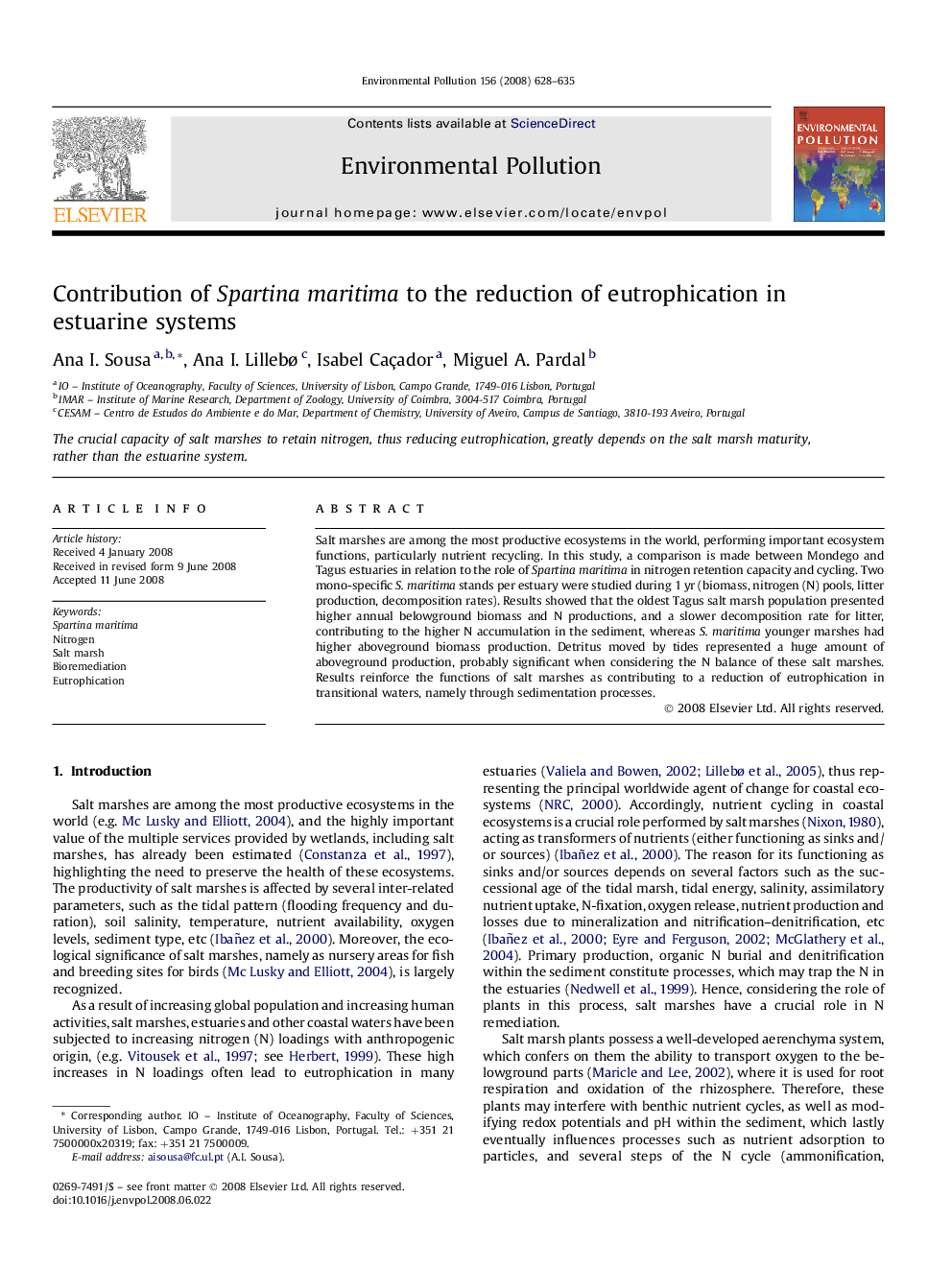| Article ID | Journal | Published Year | Pages | File Type |
|---|---|---|---|---|
| 4426191 | Environmental Pollution | 2008 | 8 Pages |
Salt marshes are among the most productive ecosystems in the world, performing important ecosystem functions, particularly nutrient recycling. In this study, a comparison is made between Mondego and Tagus estuaries in relation to the role of Spartina maritima in nitrogen retention capacity and cycling. Two mono-specific S. maritima stands per estuary were studied during 1 yr (biomass, nitrogen (N) pools, litter production, decomposition rates). Results showed that the oldest Tagus salt marsh population presented higher annual belowground biomass and N productions, and a slower decomposition rate for litter, contributing to the higher N accumulation in the sediment, whereas S. maritima younger marshes had higher aboveground biomass production. Detritus moved by tides represented a huge amount of aboveground production, probably significant when considering the N balance of these salt marshes. Results reinforce the functions of salt marshes as contributing to a reduction of eutrophication in transitional waters, namely through sedimentation processes.
